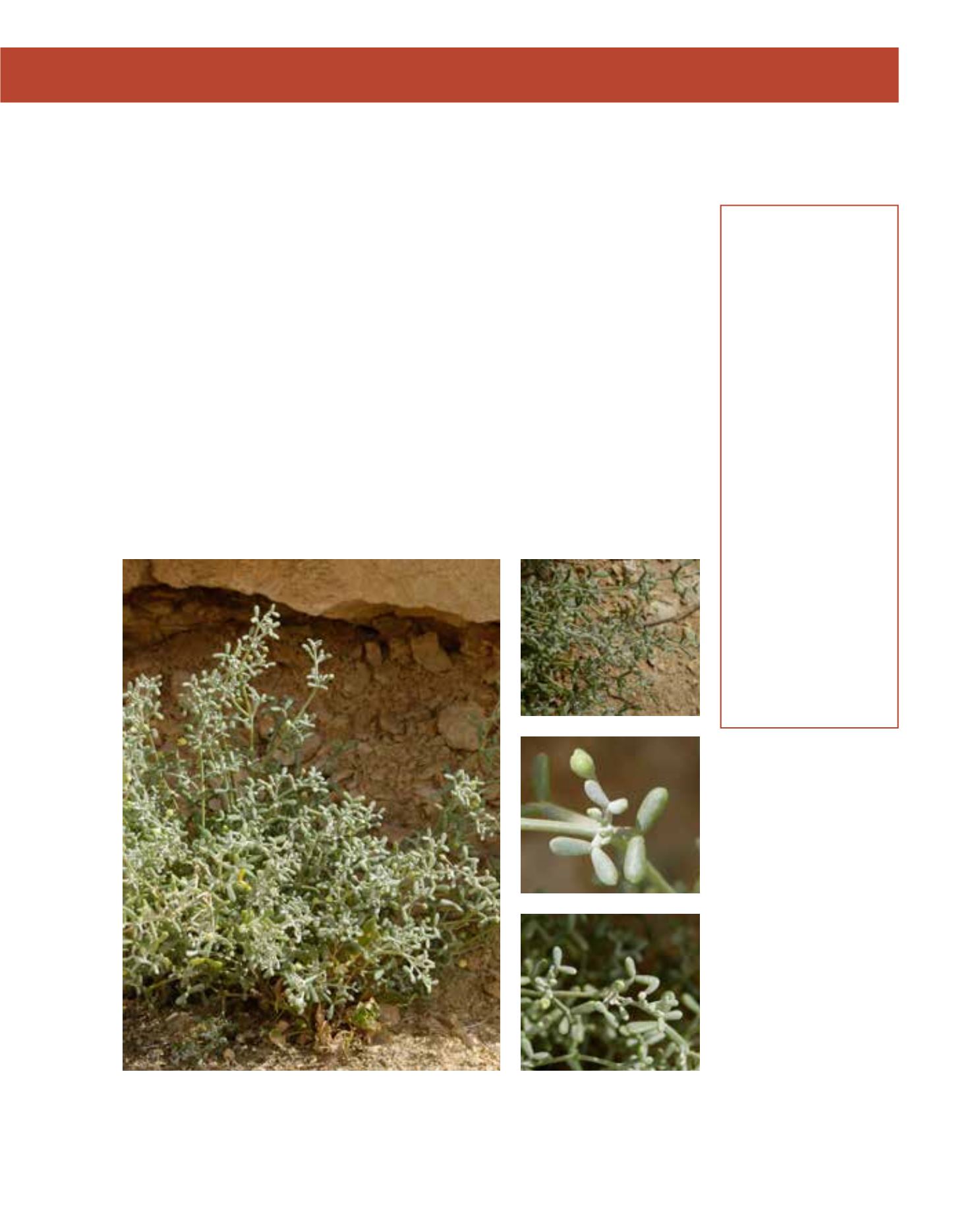

GENERAL
Origin
:
arid
Humidity
:
very arid, semi-
arid
Propagation :
direct sowing,
sowing and
pricking out
Maintenance :
low
CONDITIONS
Urban climate :
resistant
Dessication :
resistant
Stagnant water :
vulnerable
Irrigation
:
none
Salinity/ppm :
very high (7000
ppm)
Hardiness
:
-6°C
SHAPE
Type
:
shrub
Height
:
0.5 m-0.75 m
Spread
:
1 m
Foliage
:
evergreen
FLOWER
Colour
:
yellow
Size
:
4 cm
Period
:
April -
September,
November
FRUIT
Type of fruit :
capsule
Fruit size
:
0.2 cm
Zygophyllum coccineum has the Arabic names humaz, batbat and r’utrit. Its area of distribution
is the northern and central Arabian peninsula, Egypt, the Middle East, western Asia, and Paki-
stan. It is a small desert shrub growing to between 50 and 75 cm high. The plant is a succulent
(cacti type). It has a shape like a dwarf shrub, prostrating and irregular. The evergreen foliage is
olive-green to silvery green, and the succulent leaves are opposite and tomentose. The tiny, deli-
cate, yellow flowers appear in winter and spring, and have long stamens. The fruits are egg-shaped
capsules 2 mm in size. Propagation is best done by seeds. Z. coccineum has tap roots, grows on
sandy, silty soil and is highly salt-tolerant. It can be used as a groundcover or grouped plant in
natural design themes such as rock or steppe gardens, and can be found very often on abandoned
land and in open country surrounding Arriyadh. As a native, it needs no maintenance and is
highly recommended for the rehabilitation of natural plant cover. It is valuable in seed mixtures
together with other native shrubs for renaturalisation projects. It is useful in open country as a
coloniser and for hillside planting, slope stabilisation and environmental consolidation. Another
bonus is that humaz is not grazed by animals. It is also recommended for natural design themes,
such as in Wadi Hanifah, where it can be found already, having propagated by self-seeding.
324
Zygophyllum coccineum,
Zygophyllaceae
Zygophyllum,
humaz, batbat, r’utrit
















